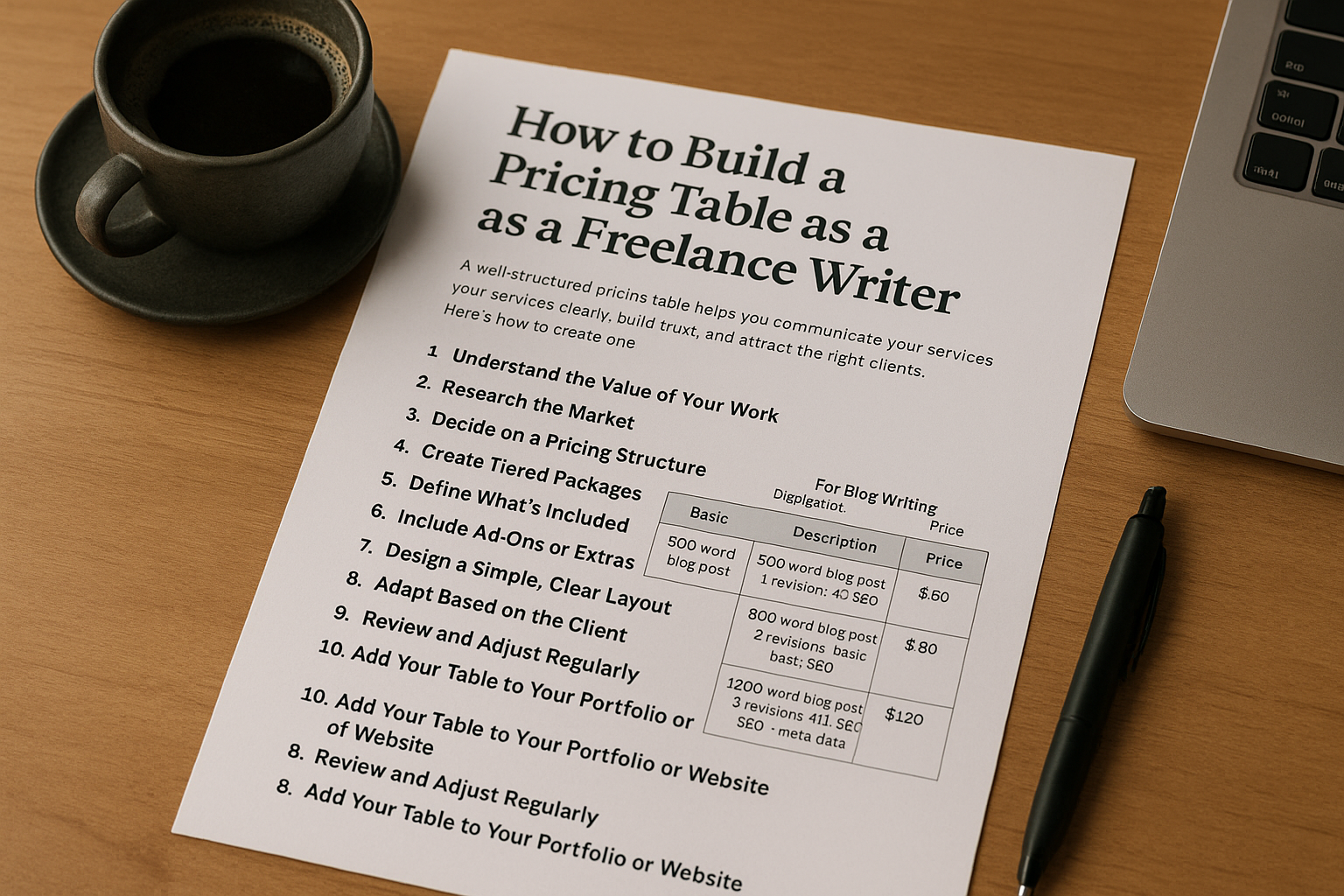One of the biggest challenges beginner freelance writers face is building a portfolio when they don’t yet have client experience. It’s the classic “chicken and egg” problem: clients want to see past work before hiring you, but how do you get work if no one will hire you in the first place?
The good news? You don’t need to wait for a client to start building an impressive portfolio. You can create one from scratch that showcases your skills, knowledge, and professionalism — even before landing your first paid gig.
Here’s how to make it happen.
Why a Portfolio Matters
A freelance writing portfolio acts as your resume, proof of skill, and calling card all in one. It gives potential clients confidence in your ability to write, adapt, and deliver quality content.
Without samples to show, clients are more likely to pass you over — not because you lack talent, but because they can’t take the risk. A portfolio solves that.
Step 1: Choose Your Writing Niches
You don’t need to commit to one niche for life, but choosing 1–3 areas to focus on in the beginning helps you build a more cohesive and targeted portfolio.
Some popular niches include:
- Health and wellness
- Personal finance
- Technology
- Marketing and business
- Parenting
- Travel
- Education
- Career development
Pick topics that interest you or that you have some knowledge in. If you’re passionate about a topic, it’ll show in your writing.
Step 2: Create High-Quality Sample Articles
Now it’s time to write. These will be your “portfolio pieces” — samples you create as if they were for real clients.
How to approach this:
- Write 3–5 articles (700–1,200 words each) based on your chosen niche(s).
- Make each piece polished, structured, and professional.
- Use SEO best practices: include headings, use keywords naturally, write meta descriptions.
Example topics:
- “5 Budget-Friendly Tips for New Parents”
- “The Future of Remote Work: Tools and Trends for 2025”
- “Beginner’s Guide to Starting a Fitness Routine at Home”
Each article should aim to educate, engage, or solve a problem for a reader — just like client work.
Step 3: Publish Your Work Online
Having your samples hosted online makes them easier to share and more professional-looking.
Here are a few simple (and free) platforms to publish your work:
Medium
Create a free account and start publishing your articles. Medium has a clean, professional design and is easy to navigate.
Use LinkedIn’s article feature to post your writing directly on your profile. This also helps you gain visibility among potential clients.
Your Own Website or Blog
If you’re serious about freelance writing, having your own site looks great. You can use WordPress, Wix, or Carrd to build a simple portfolio site that includes:
- An “About Me” page
- A “Portfolio” or “Writing Samples” page
- A “Contact” page
Step 4: Diversify Your Samples
While consistency in topic is helpful, showing a range of writing styles can attract a broader set of clients. Consider including:
- A blog post
- A product description
- A landing page sample
- A newsletter or email copy
- A listicle or how-to guide
This shows that you’re versatile and adaptable to different content types and tones.
Step 5: Offer to Guest Post or Volunteer
Once your initial samples are ready, try to get published on other websites. Even unpaid guest posts or volunteer writing can boost your credibility.
Where to look:
- Small blogs in your niche
- Nonprofits needing help with content
- Online communities and forums
- Job boards or Facebook groups offering guest post opportunities
Always ask for a byline (your name and link) when volunteering — that’s your real reward.
Step 6: Organize and Present Your Portfolio
Make your portfolio easy to browse and visually appealing. If you have a website:
- Group articles by topic or type
- Use thumbnails or short excerpts
- Include links to full articles
If you’re sharing via Google Docs or a PDF:
- Include a short intro about yourself
- Link each article title to its URL or file
- Keep the design clean and consistent
Step 7: Update Regularly
Your portfolio isn’t static. As you complete paid projects, replace or add those pieces to showcase your growing experience. Regular updates also help reflect your current skill level and preferred writing styles.
Set a reminder to review your portfolio every few months and make improvements.
What Not to Do
Avoid these common portfolio mistakes:
- Including poorly written or rushed pieces
- Linking to articles with errors or outdated info
- Using articles you didn’t write or plagiarizing
- Forgetting to proofread and format cleanly
- Hosting everything on private documents that clients can’t easily access
Your portfolio represents your brand. Treat it with the same care you would a paid client’s work.
Confidence First, Clients Next
You don’t need permission to create something valuable. A strong portfolio is often the first step to getting noticed — not the result of already being noticed. When done right, it proves that you’re serious, skilled, and ready to be hired.
Don’t wait for your first client. Start building now, and the clients will follow.
